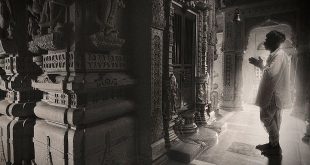The next three days, the Mother is adored as a giver of spiritual wealth, Goddess Lakshmi, who is considered to have the power of bestowing on her devotees the inexhaustible wealth. The final set of three days is spent in worshiping the mother as the goddess of wisdom, Goddess Saraswati. In order have all-round success in life, we need the blessings of all three aspects of the divine mother; hence, the worship for nine nights.
The prominent story associated with Navratri is the battle that took place between goddess Durga and the demon Mahishasura, who represents egotism.
he occasion of Navratri marks the most auspicious days of the lunar calendar. Celebrated with fervour and festivity, these nine days are dedicated solely to Maa Durga (Goddess Durga) and her nine avatars. It has different significance for different parts of the country.
The festival typically falls four times in a year. However, the Sharada Navaratri during autumn (September-October) is the most celebrated, and the Vasanta Navaratri during spring (March-April) is the next most significant Navratri.
The prominent story associated with Navratri is the battle that took place between goddess Durga and the demon Mahishasura, who represents egotism. All the nine days of the festival are dedicated to each distinct avatar of the goddess, and each of these days has a significant colour attached to it.
Celebrations in different parts of India
The word Navratri is derived from Sanskrit which means nine nights – Nava (nine) Ratri (night). Nine forms of Maa Durga are worshiped during these nine nights and days. Each state celebrates this festival in its own way.
Navratri is observed as Durga Puja in the East and in various places of Northeast India, where the festival symbolizes the victory of Goddess Durga over demon Mahishasura. The final day is referred to as Vijay Dashmi.
The North and Western parts of India celebrate Navratri by holding ‘Ram Lila’ and it culminates in Dusshera when the effigies of Ravana are burned to signify Lord Ram’s victory over Ravana.
Nine days of Navratri
Day 1 – Pratipada (Saturday – October 17, 2020): Goddess Shailputri is worshiped on this day. She is the embodiment of the collective power of Brahma, Vishnu and Mahesh. It is in this form that the goddess was worshiped as the consort of Shiva.
Day 2 – Dwitiya (Sunday – October 18, 2020): Goddess Brahmacharini is worshiped on this day. She is blissful and endows happiness, peace, prosperity and grace upon all devotees who worship her. Filled with bliss and happiness, she is the way to emancipation or Moksha.
Day 3 – Tritiya (Monday – October 19, 2020): Goddess Chandraghanta is worshiped on this day. She represents beauty and grace and is worshiped on the third day for peace, tranquility and prosperity in life. She is the apostle of bravery and possesses great strength.
Day 4 – Chaturthi (Tuesday – October 20, 2020): Goddess Kushmanda is worshiped on this day. She is considered the creator of the universe. It is believed that Kushmunda created the universe through a bout of laughter and made it verdant with vegetation.
Day 5 – Panchami (Wednesday – October 21, 2020): Goddess Skandamta is worshiped on this day. She is the mother of Skanda, or Karthikeya, who was chosen by the gods as their commander-in-chief in the war against the demons.
Day 6 – Shasthi (Thursday – October 22, 2020): Goddess Katyayani is worshiped on this day. Katyayani was born to the great sage, Kata, as an avatar of Durga. Dressed in orange, she exhibits immense courage.
Day 7 – Saptami (Friday – October 23, 2020): Goddess Kalaratri is worshiped on this day. She has a dark complexion, disheveled hair and a fearless posture. The fiercest form of Durga, she has three eyes that shine bright, with flames emanating from her breath.
Day 8 – Ashtami (Saturday – October 24, 2020): Sandhi Puja and Rama Navami will be observed this day.
Day 9 – Dashami (Sunday – October 25, 2020): The day of Navratri Parana.
 Kids Portal For Parents India Kids Network
Kids Portal For Parents India Kids Network







